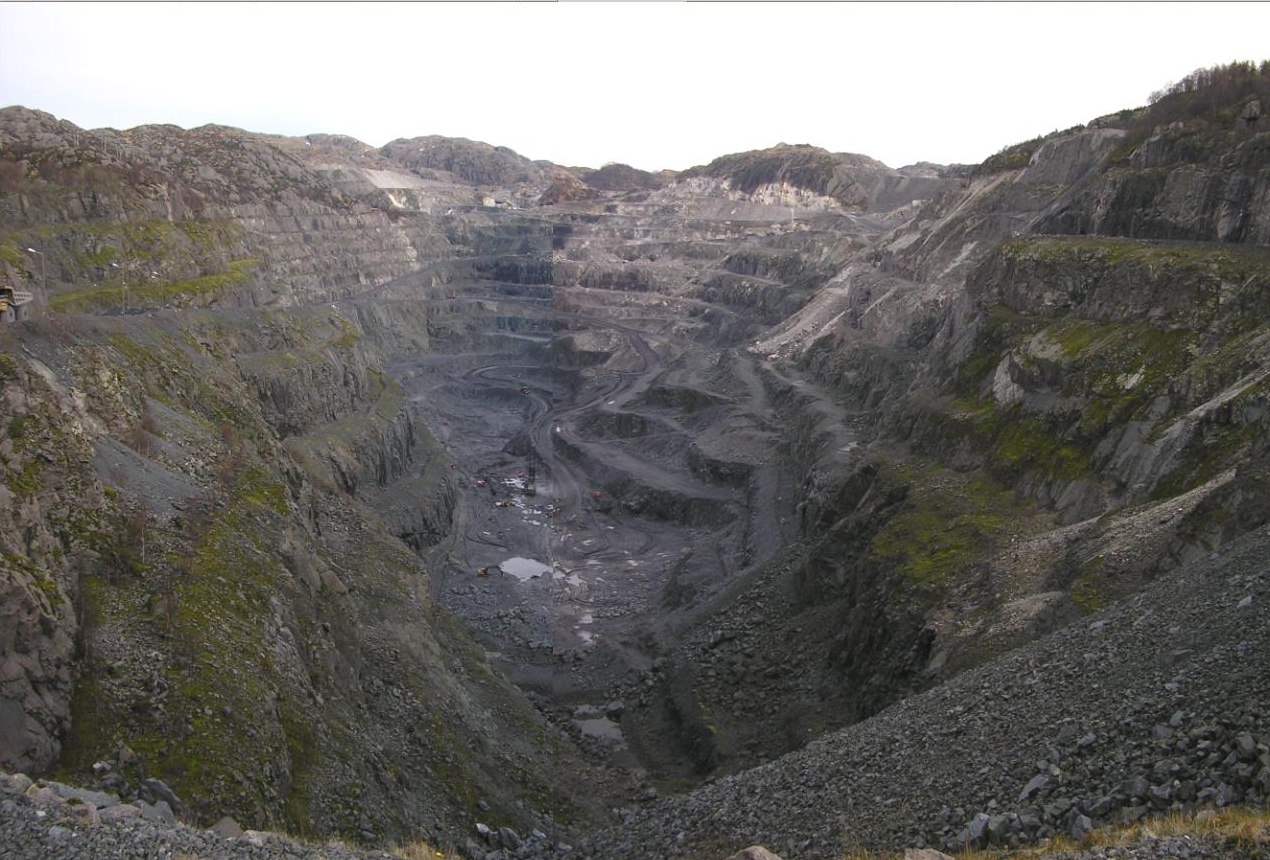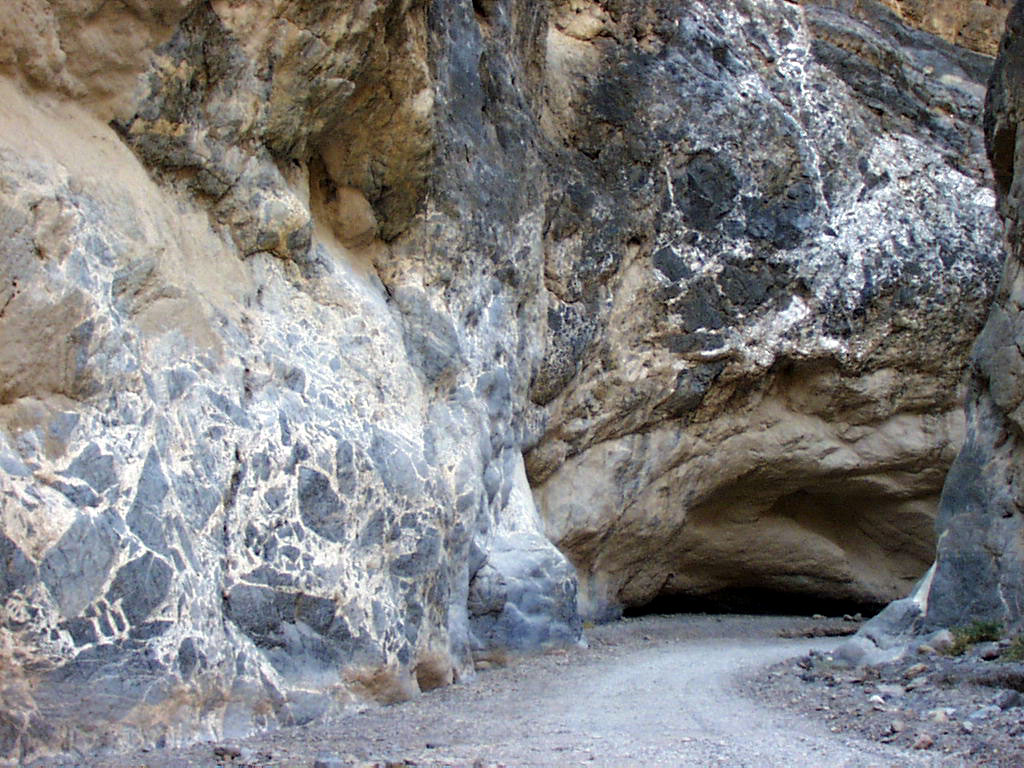|
Lake Ellen Kimberlite
The Lake Ellen Kimberlite is a poorly exposed volcanic breccia located about northeast of Crystal Falls in the Upper Peninsula of Michigan. The first publication in 1981 describing the feature led to speculation that this or similar kimberlites in the area might have been the source of the diamonds discovered a century before in Wisconsin as well as a period of exploration by several minerals firms. The kimberlite was discovered in 1971 when a logging road was bulldozed through the area exposing the unusual looking rock. The exposure consists of several small areas otherwise overlain by glacial till. Magnetic survey work done in 1956 Gair, J. E., and Wier, K. L., 1956, Geology of the Kiernan Quadrangle, Iron County, Michigan: U.S. Geological Survey Bulletin 1044, 88 p depicts an elliptical positive anomaly long in an east–west direction and wide, which probably defines the limits of the pipe. The kimberlite is intruded into volcanic rocks of the Proterozoic Hemlock F ... [...More Info...] [...Related Items...] OR: [Wikipedia] [Google] [Baidu] |
Proterozoic
The Proterozoic () is a geological eon spanning the time interval from 2500 to 538.8million years ago. It is the most recent part of the Precambrian "supereon". It is also the longest eon of the Earth's geologic time scale, and it is subdivided into three geologic eras (from oldest to youngest): the Paleoproterozoic, Mesoproterozoic, and Neoproterozoic. The Proterozoic covers the time from the appearance of oxygen in Earth's atmosphere to just before the proliferation of complex life (such as trilobites or corals) on the Earth. The name ''Proterozoic'' combines two forms of ultimately Greek origin: meaning 'former, earlier', and , 'of life'. The well-identified events of this eon were the transition to an oxygenated atmosphere during the Paleoproterozoic; the evolution of eukaryotes; several glaciations, which produced the hypothesized Snowball Earth during the Cryogenian Period in the late Neoproterozoic Era; and the Ediacaran Period (635 to 538.8 Ma) which is cha ... [...More Info...] [...Related Items...] OR: [Wikipedia] [Google] [Baidu] |
Breccias
Breccia () is a rock composed of large angular broken fragments of minerals or rocks cemented together by a fine-grained matrix. The word has its origins in the Italian language, in which it means "rubble". A breccia may have a variety of different origins, as indicated by the named types including sedimentary breccia, tectonic breccia, igneous breccia, impact breccia, and hydrothermal breccia. A megabreccia is a breccia composed of very large rock fragments, sometimes kilometers across, which can be formed by landslides, impact events, or caldera collapse. Types Breccia is composed of coarse rock fragments held together by cement or a fine-grained matrix. Like conglomerate, breccia contains at least 30 percent of gravel-sized particles (particles over 2mm in size), but it is distinguished from conglomerate because the rock fragments have sharp edges that have not been worn down. These indicate that the gravel was deposited very close to its source area, since otherwise t ... [...More Info...] [...Related Items...] OR: [Wikipedia] [Google] [Baidu] |
Elliott County Kimberlite
The Elliott County Kimberlite (Sometimes called the Ison Creek Kimberlite) was discovered in Elliott County, Kentucky, by Albert R. Crandall in 1884 over two years before Carvill Lewis named a similar porphyritic peridotite occurring near Kimberley, South Africa, a kimberlite. It occurs as three separate elongate intrusive bodies 1/4 to 1/2 mi in length and a few hundred feet in width, within an area of about a square mile. The rock is a dark-green peridotite (kimberlite) composed of serpentinized olivine and a number of accessory minerals, including phlogopite, pyrope, calcite, enstatite, magnesian ilmenite, and others. Xenoliths, mainly of shale, and igneous rock inclusions are abundant in the three intrusive bodies as described by William Brown in 1977. Detailed petrographic descriptions of the peridotite are presented by Diller in 1887 and Bolivar in 1982. The peridotite has been dated to Early Permian time by K-Ar and Rb-Sr dating of xenocrystic biotite from one of th ... [...More Info...] [...Related Items...] OR: [Wikipedia] [Google] [Baidu] |
Lamproite
Lamproite is an ultrapotassic mantle-derived volcanic or subvolcanic rock. It has low CaO, Al2O3, Na2O, high K2O/Al2O3, a relatively high MgO content and extreme enrichment in incompatible elements. Lamproites are geographically widespread yet are volumetrically insignificant. Unlike kimberlites, which are found exclusively in Archaean cratons, lamproites are found in terrains of varying age, ranging from Archaean in Western Australia, to Palaeozoic and Mesozoic in southern Spain. They also vary widely in age, from Proterozoic to Pleistocene, the youngest known example from Gaussberg in Antarctica being 56,000 ± 5,000 years old. Lamproite volcanology is varied, with both diatreme styles and cinder cone or cone edifices known. Petrology Lamproites form from partially melted mantle at depths exceeding 150 km. The molten material is forced to the surface in volcanic pipes, bringing with it xenoliths and diamonds from the harzburgitic peridotite or eclogite mantle r ... [...More Info...] [...Related Items...] OR: [Wikipedia] [Google] [Baidu] |
Diopside
Diopside is a monoclinic pyroxene mineral with composition . It forms complete solid solution series with hedenbergite () and augite, and partial solid solutions with orthopyroxene and pigeonite. It forms variably colored, but typically dull green crystals in the monoclinic prismatic class. It has two distinct prismatic cleavages at 87 and 93° typical of the pyroxene series. It has a Mohs hardness of six, a Vickers hardness of 7.7 GPa at a load of 0.98 N, and a specific gravity of 3.25 to 3.55. It is transparent to translucent with indices of refraction of nα=1.663–1.699, nβ=1.671–1.705, and nγ=1.693–1.728. The optic angle is 58° to 63°. Formation Diopside is found in ultramafic ( kimberlite and peridotite) igneous rocks, and diopside-rich augite is common in mafic rocks, such as olivine basalt and andesite. Diopside is also found in a variety of metamorphic rocks, such as in contact metamorphosed skarns developed from high silica dolomites. It is an ... [...More Info...] [...Related Items...] OR: [Wikipedia] [Google] [Baidu] |
Ilmenite
Ilmenite is a titanium-iron oxide mineral with the idealized formula . It is a weakly magnetic black or steel-gray solid. Ilmenite is the most important ore of titanium and the main source of titanium dioxide, which is used in paints, printing inks, fabrics, plastics, paper, sunscreen, food and cosmetics. Structure and properties Ilmenite is a heavy (specific gravity 4.7), moderately hard (Mohs hardness 5.6 to 6), opaque black mineral with a submetallic luster. It is almost always massive, with thick tabular crystals being quite rare. It shows no discernible cleavage, breaking instead with a conchoidal to uneven fracture. Ilmenite crystallizes in the trigonal system with space group ''R''. The ilmenite crystal structure consists of an ordered derivative of the corundum structure; in corundum all cations are identical but in ilmenite Fe2+ and Ti4+ ions occupy alternating layers perpendicular to the trigonal c axis. Pure ilmenite is paramagnetic (showing only very weak attra ... [...More Info...] [...Related Items...] OR: [Wikipedia] [Google] [Baidu] |
Pyrope
The mineral pyrope is a member of the garnet group. Pyrope is the only member of the garnet family to always display red colouration in natural samples, and it is from this characteristic that it gets its name: from the Greek for ''fire'' and ''eye''. Despite being less common than most garnets, it is a widely used gemstone with numerous alternative names, some of which are misnomers. ''Chrome pyrope'', and ''Bohemian garnet'' are two alternative names, the usage of the latter being discouraged by the Gemological Institute of America.(Gia), Gemological. Gem Reference Guide. City: Gemological Institute of America (GIA), 1988. Misnomers include ''Colorado ruby'', ''Arizona ruby'', ''California ruby'', ''Rocky Mountain ruby'', ''Elie Ruby'', ''Bohemian carbuncle'', and ''Cape ruby''. The composition of pure pyrope is Mg3Al2(SiO4)3, although typically other elements are present in at least minor proportions—these other elements include Ca, Cr, Fe and Mn. Pyrope forms a soli ... [...More Info...] [...Related Items...] OR: [Wikipedia] [Google] [Baidu] |
Volcanic Rock
Volcanic rock (often shortened to volcanics in scientific contexts) is a rock formed from lava erupted from a volcano. In other words, it differs from other igneous rock by being of volcanic origin. Like all rock types, the concept of volcanic rock is artificial, and in nature volcanic rocks grade into hypabyssal and metamorphic rocks and constitute an important element of some sediments and sedimentary rocks. For these reasons, in geology, volcanics and shallow hypabyssal rocks are not always treated as distinct. In the context of Precambrian shield geology, the term "volcanic" is often applied to what are strictly metavolcanic rocks. Volcanic rocks and sediment that form from magma erupted into the air are called "volcaniclastics," and these are technically sedimentary rocks. Volcanic rocks are among the most common rock types on Earth's surface, particularly in the oceans. On land, they are very common at plate boundaries and in flood basalt provinces. It has been est ... [...More Info...] [...Related Items...] OR: [Wikipedia] [Google] [Baidu] |
Volcanic Breccia
Breccia () is a rock composed of large angular broken fragments of minerals or rocks cemented together by a fine-grained matrix. The word has its origins in the Italian language, in which it means "rubble". A breccia may have a variety of different origins, as indicated by the named types including sedimentary breccia, tectonic breccia, igneous breccia, impact breccia, and hydrothermal breccia. A megabreccia is a breccia composed of very large rock fragments, sometimes kilometers across, which can be formed by landslides, impact events, or caldera collapse. Types Breccia is composed of coarse rock fragments held together by cement or a fine-grained matrix. Like conglomerate, breccia contains at least 30 percent of gravel-sized particles (particles over 2mm in size), but it is distinguished from conglomerate because the rock fragments have sharp edges that have not been worn down. These indicate that the gravel was deposited very close to its source area, since otherwise th ... [...More Info...] [...Related Items...] OR: [Wikipedia] [Google] [Baidu] |
Glacial Till
image:Geschiebemergel.JPG, Closeup of glacial till. Note that the larger grains (pebbles and gravel) in the till are completely surrounded by the matrix of finer material (silt and sand), and this characteristic, known as ''matrix support'', is diagnostic of till. image:Glacial till exposed in roadcut-750px.jpg, Glacial till with tufts of grass Till or glacial till is unsorted glacier, glacial sediment. Till is derived from the erosion and entrainment of material by the moving ice of a glacier. It is deposited some distance down-ice to form terminal, lateral, medial and ground moraines. Till is classified into primary deposits, laid down directly by glaciers, and secondary deposits, reworked by fluvial transport and other processes. Description Till is a form of '' glacial drift'', which is rock material transported by a glacier and deposited directly from the ice or from running water emerging from the ice. It is distinguished from other forms of drift in that it is dep ... [...More Info...] [...Related Items...] OR: [Wikipedia] [Google] [Baidu] |
Wisconsin
Wisconsin () is a state in the upper Midwestern United States. Wisconsin is the 25th-largest state by total area and the 20th-most populous. It is bordered by Minnesota to the west, Iowa to the southwest, Illinois to the south, Lake Michigan to the east, Michigan to the northeast, and Lake Superior to the north. The bulk of Wisconsin's population live in areas situated along the shores of Lake Michigan. The largest city, Milwaukee, anchors its largest metropolitan area, followed by Green Bay and Kenosha, the third- and fourth-most-populated Wisconsin cities respectively. The state capital, Madison, is currently the second-most-populated and fastest-growing city in the state. Wisconsin is divided into 72 counties and as of the 2020 census had a population of nearly 5.9 million. Wisconsin's geography is diverse, having been greatly impacted by glaciers during the Ice Age with the exception of the Driftless Area. The Northern Highland and Western Upland along ... [...More Info...] [...Related Items...] OR: [Wikipedia] [Google] [Baidu] |







